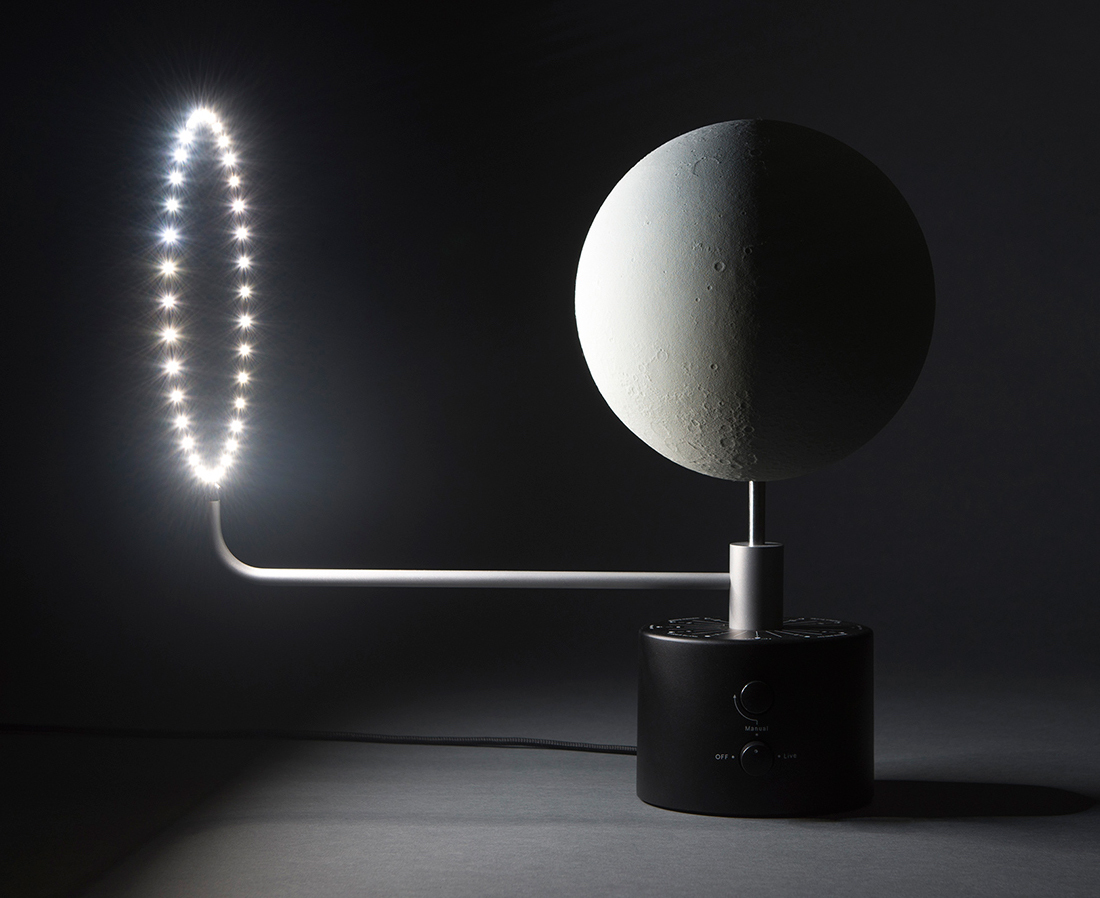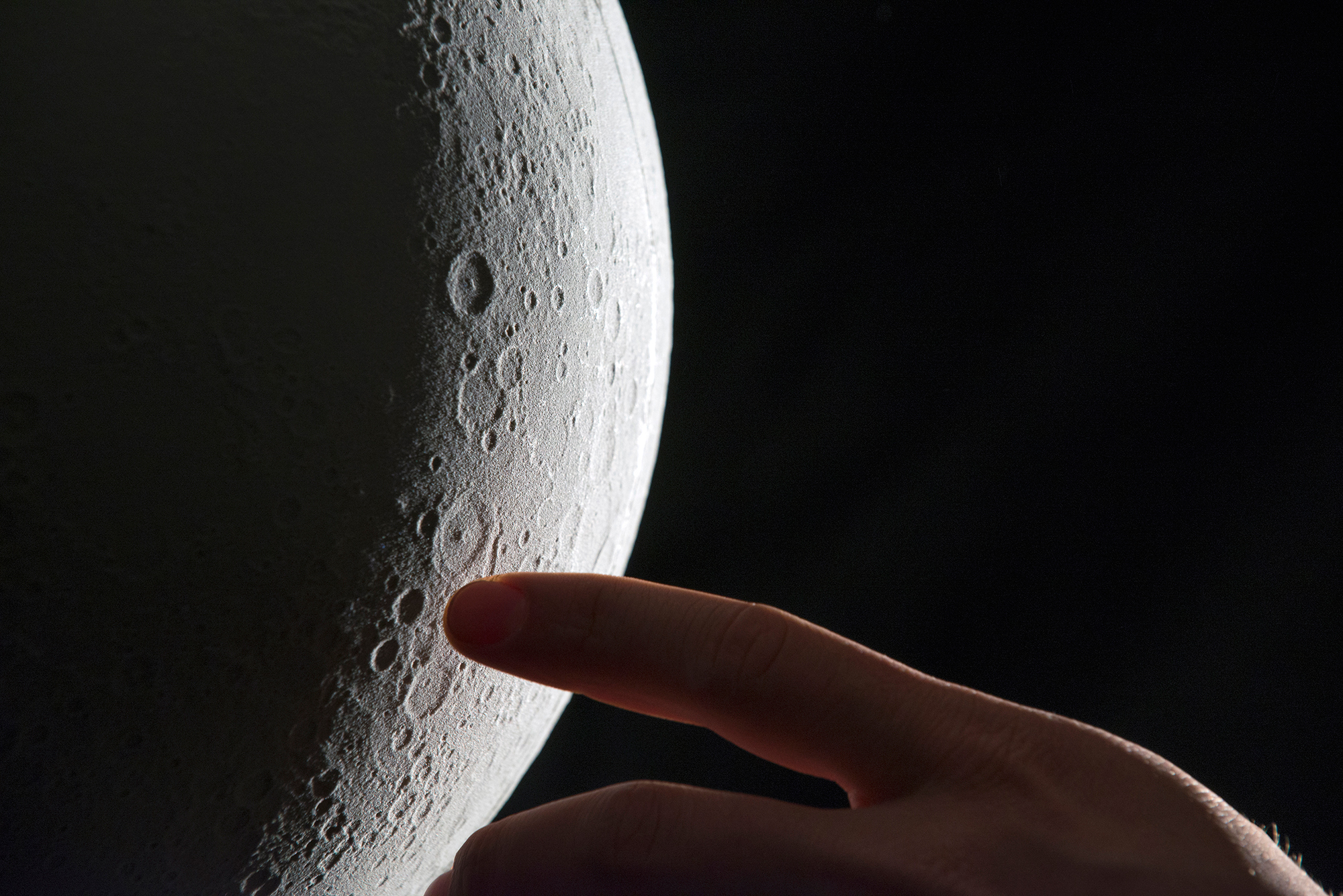
Never cared much for having a globe at home… until now.
Oscar Lhermitte and the design tag team Kudu are ready to manufacture the first batch of MOON lunar globes for commercial sale. MOON is the ‘most accurate lunar globe’ in existence, and is based on NASA’s Lunar Reconnaissance Orbiter topographic data collected by the Institute of Planetary Research.
MOON is the coolest lunar globe to enter the market. Most lunar globes are 2D photographs, or illustrations imposed on spherical surfaces. Lhermitee tried to make his moon replica different, by giving it the same topographical surface as the moon, with an accuracy of 1/20 million.
MOON actually features all the craters, elevations, and ridges on the surface of the moon (and yes, they are named). It also functions much like a lunar calendar, because the globe has an option to feature an LED light extension that is in time with the orbit of the moon, allowing users to see the exact lunar phases on the globe as are seen from earth day-to-day.

The globe is 6.8 inches in diameter and fits on a table surface of 21.6 in x 21.6 in. It is made by 3D printing a full moon jack cast in an industrial SLS nylon printer with a layer thickness of 100 microns. Then the globes are rotocasted from hard polyurethane resin in a custom machine and intricately painted to match the unique color of the moon.
The arm of the globe is CNC-machined from aluminum of aircraft-grade (ooh lala), and the case is thick, quality steel with a black powder finish. The electronic board features an analog display, which offers three modes of use: manual, demo, and live. Live mode allows users to follow the lunar phases up close, as the globe keeps in time with the Lunar synodic month. One full rotation takes about 29 days, 12 hours, 44 minutes, and 2.80 seconds. But who’s counting?
Read more at SolidSmack.com

